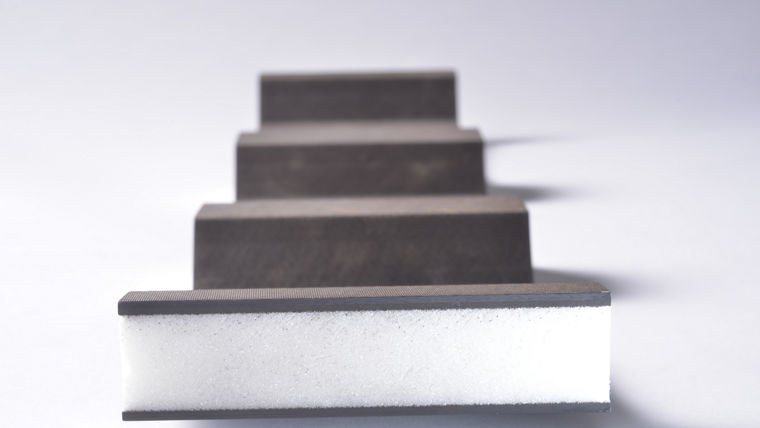The transformation of the automotive industry is in full swing. E-mobility is a central building block in achieving climate goals in transportation. It allows for a drastic reduction in CO2 emissions caused by road traffic. This is urgently needed: in 2022, cars emitted about 16% of global CO2 emissions, according to the International Energy Agency (IEA). If road traffic were a country, it would rank second among the world's largest CO2 emitters, just behind the USA. However, the shift to electric vehicles means more than just a change in the drive concept. A fundamental change in how and from what cars are built is necessary.
ELEMENTS-Newsletter
Get exciting insights into Evonik's research and its social relevance – conveniently delivered to your inbox.
Automotive lightweight construction and the circular economy are becoming important guiding principles: lightweight plastic components are increasingly replacing heavier materials. More sustainable materials are gaining importance.
Composite materials for lightweight automotive construction
Consistent lightweight construction helps to at least partially offset the weight increase caused by the several hundred kilograms of traction batteries in electric vehicles. This increases their range. Moreover, if electric cars are designed to be lighter from the outset, for example, engines can be smaller and batteries can be designed to be more compact, which in turn conserves resources. A particularly significant contribution to future weight savings could come from so-called sandwich constructions. These are modern carbon fiber composite materials with a core made of particularly lightweight rigid foam.
The chemical company Evonik produces ROHACELL based on polymethacrylimide and ROHACRYL based on acrylic. So far, ROHACELL has been used in the automotive sector in racing cars or super sports cars. A recent example from boat building illustrates the significant benefits that high-performance foams can offer for forward-looking mobility concepts: the British company Falcon Tenders recently presented a barge whose roof was constructed and manufactured with the sustainable ROHACRYL. By using this high-performance composite foam, the component was made 75 percent lighter than required while still being stable enough to ensure the safe installation of 120 kilogram of panoramic glass.

A particular strength of the composite foam ROHACRYL™ lies in its recyclability. The polymer design allows for the recovery of components, thus closing the material loop—a clean solution at the end of the product's life cycle.
This example shows the potential of sandwich constructions, especially when it comes to large vehicles like electric buses. The sheer size of the market ensures that even the optimization of seemingly small components leads to significant improvements.
Light and cool
An example of this is rubber hoses for coolant lines. They are increasingly being replaced by thermoplastic solutions with high-performance plastics like VESTAMID Polyamide 12. Corresponding pipes are lighter and more cost-effective and can be easily shaped after extrusion.
This enables particularly efficient, space-saving solutions, for example, under the hood or in the battery pack of electric vehicles. Thermoplastic connectors also simplify assembly, thus accelerating not only the production process for automotive manufacturers but also work in workshops.

Further applications for Polyamide 12 arise from its combination with other materials like polypropylene. Thin-walled, three-layer cooling lines made from this material combination enable adequate thermal management of high-voltage batteries, electric motors, and power electronic systems. Protecting components from overheating and excessive cold is a prerequisite for the long-term and safe operation of electric vehicles.
The goal is to keep the temperature in the entire cooling circuit below 80° C. The battery temperature should be maintained between 20° C and 40° C for optimal performance. The material requirements, such as impact resistance or elongation at break, are high: the cooling lines must remain functional over the entire lifespan of the vehicle—at least 20 years—even when parked outdoors in hot summers or when cold winter gravel is kicked up from the road and hits the material.

Adhesives enable lightweight construction
However, the consistent application of lightweight construction principles requires more than just optimizing materials. Construction processes must also be adapted, particularly in joining technology. Where lightweight construction and aesthetics are required, modern adhesive solutions offer decisive advantages. The extent to which adhesive technology has already established itself is evidenced by two figures from the Adhesives Industry Association: approximately 15 to 18 kilograms of adhesive are processed per car. Overall, the automotive industry uses about nine percent of the total annual adhesive production.
Adhesives help to compensate for the weight of the several hundred kilograms of lithium-ion batteries in electric cars, thereby increasing vehicle performance and range. For example, if floor panels made of composite materials are directly bonded to the aluminum body using two-component adhesives, this can save up to 10 percent in weight compared to traditional joining methods.
Adhesive bonds lead to greater design freedom. For instance, directly bonded front and rear windows increase the stiffness of the body. Manufacturers can therefore design their vehicles to be more aerodynamic. The reduced air resistance helps to lower energy consumption during driving.
Since no fastening holes are needed, the risk of corrosion is minimized. Another significant advantage—when different materials are joined—is the permanent flexibility of the connection. The stress is evenly distributed over the entire adhesive surface, avoiding stress peaks.

The requirements for an adhesive change depending on the specific application: sometimes high strength is required, other times high resistance to aggressive liquids or permanent UV exposure from sunlight. Increasingly, the recyclability of bonded materials is coming into focus, for example, by making the bonding reversible. Chemical companies like Evonik offer a wide portfolio of specially tailored additives, binders, and other components. This is the only way adhesives can be specifically optimized for later applications.
Thinking about the end from the beginning
Innovative lightweight construction methods can significantly improve the climate footprint of a vehicle during its usage phase. However, the expectations that many vehicle manufacturers set for themselves are already higher: the German automotive industry has set itself the goal of enabling fully climate-neutral mobility by 2050 at the latest—in line with the Paris Climate Agreement.
Without a circular economy, this vision is unlikely to become a reality. While CO2 emissions during operation are now minimal thanks to alternative drives, emissions generated during raw material extraction, processing, vehicle production, and at the end of the usage cycle will become more significant in the future.
Therefore, it is essential that strategies for CO2 reduction extend beyond the usage phase of vehicles and consider all stages of value creation. This is precisely reflected in the concept of a circular economy.
To close material loops, it is crucial to consider the end of a product's life from the very beginning. This can be achieved with approaches like "Design for Circularity": the goal is to design products so that they can be easily and completely recycled, allowing them to serve as raw material for a new product. Evonik has demonstrated in a study how this approach could be implemented in the automotive sector with a monomaterial car seat.

Car seats must meet complex requirements. The frame should be stable and robust, while the backrest needs to provide support, among other things. Therefore, numerous different plastics are usually combined with other materials like steel. Separating this mix for recycling is labor-intensive. Together with engineers from VESTARO, Evonik's plastics experts have developed a demonstrator where all components of a car seat, such as hard shells, foams, nonwovens, or fibers, were made from Polyamide 12.
Mass balancing paves the way for sustainable raw materials
Specialty chemical companies like Evonik can advance the establishment of a circular economy on various levels. For example, by changing their raw material base: the Essen-based company has long offered circular polyamides. Here, alternative raw materials such as pyrolysis oil from used tires or used frying fat are used in a mass balance approach. Compared to the regular production of a standard material, the footprint improves by about 70 percent.

Due to the complex value chains, it is generally not sensible in the chemical industry to create a separate infrastructure solely for sustainable raw materials. This is where the mass balance principle comes into play, which compares the input materials with the output products of production processes. This ensures that sustainable end products correspond to the purchased amount of sustainable, i.e., recycled or bio-based raw materials. The entire process is verified and certified by an independent body according to internationally recognized standards, such as ISCC or REDCert. Through strict accounting and external audits, the mass balance approach enables sustainable products on a large scale. Cost-effective solutions are created, with every renewable molecule used being traceable.
Evonik uses this approach, for example, to produce isophorone-based products from circular acetone. In automotive construction, this can be used to manufacture particularly high-quality instrument panels or trims. The products of the VESTA eCO series are chemically identical to their fossil counterparts and equally high-performing. At the same time, they significantly reduce the share of fossil carbon: depending on the specific product, by 75 to 100 percent.
The construction of automobiles will continue to evolve in the future, especially in light of the ever-increasing demands for sustainable mobility and the necessary CO2 savings associated with it.

One thing is already certain: lightweight construction and the circular economy will continue to play an important role. And it is chemical companies like Evonik that contribute to greater efficiency, safety, and sustainability with innovative products and solutions.



